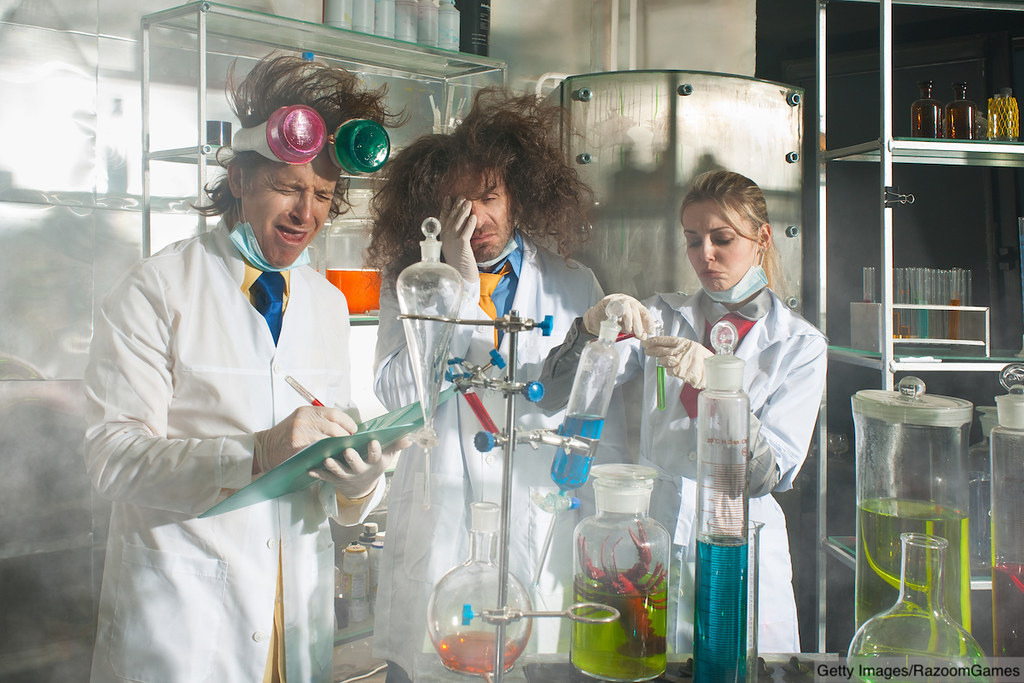
After the sweeping success of her last documentary on reading instruction, Emily Hanford is back with another shocking study, this one on Chemistry pedagogy in U.S. schools. Her latest investigation finds that, despite little scientific support, more and more teachers are using an instructional method called Whole Chemistry.
Whole Chemistry instruction (WC), popularized in the late 1980s, is based on the combined ideas that humans are naturally curious and adept at identifying patterns in everything they see, and that students, especially high schoolers, learn best by experience. Rather than emphasizing the rote acquisition of facts—e.g., the periodic table, the noble gases, chemical reaction equations, Avogadro’s number—WC teachers encourage students to explore the properties of and interactions between different chemicals for themselves.
The scientific community has some issues with WC pedagogy. Randomized control studies consistently find that participation in WC programs is correlated with more hospital visits per student and greater risk for sudden cognitive impairment. Indeed, one 2016 study of WC schools found that WC campuses send an average of thirty-three more students to the emergency room per year than non-WC schools. Researchers, however, were hesitant to claim direct causation.
Hanford again published her investigation in an audio documentary format, noting on Twitter that, “Given the illiteracy crisis caused by whole language, I’ve found radio is the only way to communicate with most of the American public.”
In the piece, Hanford visits an eleventh grade class that is ostensibly learning about acids and bases. Where a traditional lesson might start with a theoretical understanding of the pH scale, a demonstration of pH strips, and a short lab investigating the pH of household items, students walked into this classroom to find a variety of chemicals arranged on their desks and were given the instruction, “Find out what’s different between these substances.” At their disposal were pH strips, but also Bunsen burners, scales, and other unidentifiable tools.
“Where is your safety equipment kept?” Hanford asked the teacher, who preferred to remain anonymous.
Some school districts are beginning to explore online teacher training seminars that discourage the use of WC in classrooms and that push instead for “balanced chemistry.” But changing attitudes toward scientific instruction will be an uphill battle.

